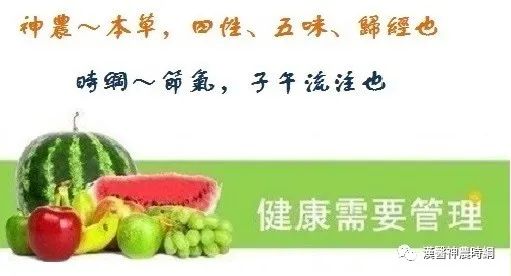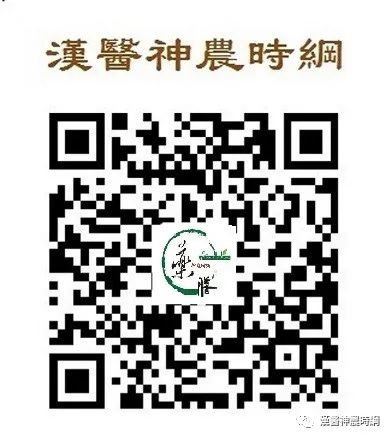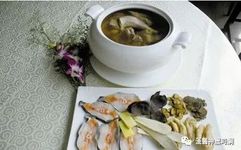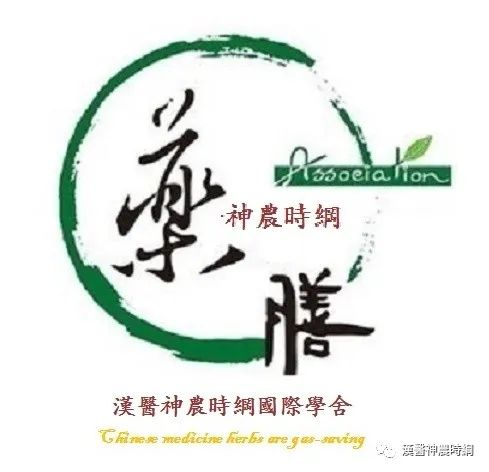
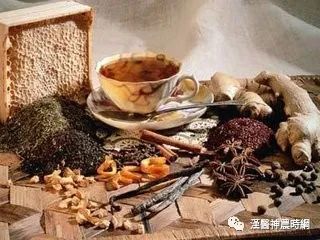
Medicinal Cuisine (Yao Shan) originates from China’s traditional dietary and TCM (Traditional Chinese Medicine) dietary therapy culture. Medicinal cuisine is prepared under the guidance of theories from TCM, culinary arts, and nutrition, strictly following medicinal cuisine recipes that combine Chinese herbs with certain food items that have medicinal value, using unique Chinese cooking techniques and modern scientific methods to create delicious foods with specific colors, aromas, flavors, and forms. (In short, medicinal cuisine is gourmet food made by pairing medicinal materials with ingredients.) It is a product of the integration of traditional medical knowledge and culinary experience in China.
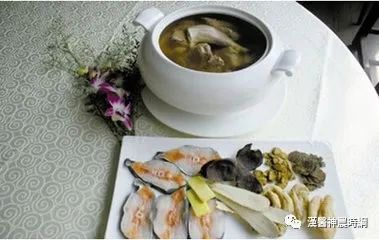
It embodies the concept of “medicinal food,” where medicine is treated as food, and food is endowed with medicinal properties. The medicinal power is enhanced by the food, and the food supports the efficacy of the medicine, with both complementing and enhancing each other; it possesses high nutritional value and can prevent and treat diseases, promote health, and prolong life.
Medicinal cuisine is an important component of TCM, a unique practical clinical discipline that has gradually formed through thousands of years of exploration and accumulation by the Chinese nation, and is a valuable cultural heritage left by our ancestors. For thousands of years, traditional Chinese medicine has placed great importance on the dialectical relationship between dietary regulation and health longevity, which includes dietary therapy, using food to achieve health maintenance and disease prevention, as well as medicinal cuisine, which combines food and medicine to create meals for health maintenance and disease treatment. The medicinal cuisine mentioned in this article includes dietary therapy content.
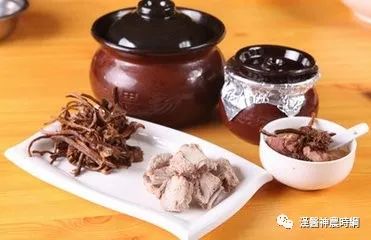
TCM has accumulated valuable experience in medicinal cuisine dietary therapy through long-term medical practice, forming a unique theoretical system. Therefore, the study of medicinal cuisine is an important part of TCM. Actively promoting TCM medicinal cuisine dietary therapy not only contributes significantly to the health and longevity of the Chinese people but also has far-reaching significance for the development of global health care medicine.
The development of modern medicinal cuisine is based on summarizing the experiences of ancient people, further improving its application to align more closely with the development of TCM theories, while also incorporating modern scientific research and applications, thus possessing a theoretical and scientific development direction. Its development characteristics are increasingly diversified.
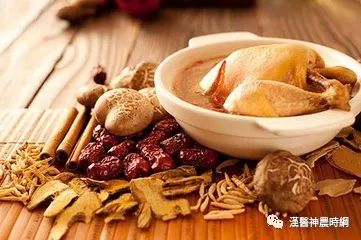
Firstly, it summarizes and applies the experiences of predecessors without being rigidly bound to the past, using TCM theories as guidance, such as the theories of Yin-Yang, Five Elements, organ systems, and the properties and compatibility of Chinese herbs to formulate meals. Over time, a relatively systematic theoretical system has formed. For example, following the theory of the meridian pathways of herbs, it emphasizes that “sour enters the liver, bitter enters the heart, sweet enters the spleen, spicy enters the lungs, and salty enters the kidneys”; it advocates for dialectical use of herbs, tailoring meals to individuals and times.
Secondly, it emphasizes the combination of Chinese herbs and food. Medicinal cuisine not only has distinct TCM characteristics but also possesses general food characteristics, emphasizing color, aroma, flavor, and form, while paying attention to nutritional value. Therefore, a good medicinal cuisine should actively contribute to health maintenance and disease prevention while providing good nutrition and stimulating appetite, leaving a lingering taste.
Thirdly, the technical operations and special applications of modern medicinal cuisine also showcase diverse methods. Since medicinal cuisine is a special type of food, its cooking methods have their own characteristics. In addition to general food preparation methods, the processing of ingredients must also follow the theories of herb preparation. For example, Chengdu Tonghui Hall’s lotus leaf phoenix breast, Cordyceps chicken, Guangchun Hall’s ginkgo chicken cubes, Jilin’s ginseng bear paw, and stir-fried ginseng mountain chicken slices, all have their unique characteristics and are well-known.

Since the founding of the nation, over 50 specialized works on medicinal cuisine and dietary therapy have been published, such as the influential work published by the People’s Health Publishing House in the 1980s, “Chinese Clinical Medicinal Cuisine and Dietary Therapy”, as well as the series of books on Chinese medicinal cuisine recipes and the series on medicinal cuisine for disease prevention and treatment published by the Science and Technology Literature Publishing House. These works have made significant contributions to promoting Chinese medicinal cuisine culture and advancing the health care industry of medicinal cuisine. Especially in the past decade, with the call for humanity to return to nature, medicinal cuisine, which embodies the natural food that integrates treatment and nourishment, has gained immense popularity. Medicinal cuisine restaurants have sprung up like mushrooms after rain, various high-quality and popular medicinal cuisine books are continuously published, and specialized medicinal cuisine institutions have been established. Medicinal cuisine has begun to spread from China to the world, moving towards industrialization and modernization.
Human ancestors, in their quest for survival, had to forage for food in nature. Over time, they discovered that certain animals and plants could not only satisfy hunger but also had medicinal value. In the primitive stage of human society, people did not have the ability to separate food from medicine. This phenomenon of combining food and medicine formed the source and prototype of medicinal cuisine. Perhaps it is based on this situation that traditional Chinese medicine states, “food and medicine share the same source.”
Modern archaeologists have discovered many medicinal foods from primitive times, and modern ethnology has found that some primitive tribes still produce foods with medicinal effects. These findings prove that medicinal cuisine can indeed be traced back to the primitive era of humanity. However, this primitive prototype of medicinal cuisine cannot be considered true medicinal cuisine, as people at that time were not consciously utilizing the medicinal properties of food. True medicinal cuisine can only appear in a civilized era when humanity has accumulated rich knowledge of medicine and cooking experience.

So, when did true medicinal cuisine originate in China, and how has it evolved? After the emergence of written language in China, the characters for “medicine” and “cuisine” appeared in oracle bone inscriptions and bronze inscriptions. The earliest use of the term “medicinal cuisine” can be found in the “Book of the Later Han: Biographies of Women”, which includes phrases like “the mother prepared medicinal cuisine with deep affection”. The “History of Song: Biography of Zhang Guan” also records “rising early to serve medicinal cuisine”. These records prove that at least over a thousand years ago, medicinal cuisine had already appeared in China. Before the term “medicinal cuisine” emerged, ancient Chinese texts had already documented the preparation and application of medicinal cuisine.
The “Shennong Bencao Jing”, written during the Han Dynasty, is the earliest pharmacological work in China, listing 365 types of medicinal substances, including about 50 types of medicinal foods such as sour jujube, citrus, grapes, jujubes, sea clams, dried ginger, red beans, millet, longan, crabs, almonds, and peach kernels,
including grains, vegetables, insects, fish, poultry, and meat as “food medicines”, and it records that these substances have the effect of “lightening the body and prolonging life”. This indicates that at that time, the medicinal value of certain foods was already recognized and affirmed. As for the mention of medicinal cuisine, it can be traced back to the Eastern Han period, as seen in the “Book of the Later Han: Biographies of Women”, which mentions “the mother prepared medicinal cuisine… with deep affection”, marking the beginning of the term “medicinal cuisine” and has been used since then.
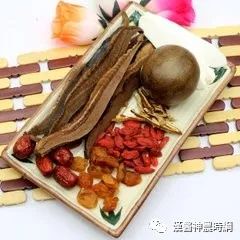
The famous physician Zhang Zhongjing in the Eastern Han Dynasty included content related to dietary therapy and medicinal cuisine in his works, such as the “Treatise on Febrile Diseases” and the “Essential Prescriptions from the Golden Chamber”, which lists dietary restrictions and includes recipes like pig skin soup for treating Shaoyin throat pain and Angelica and ginger lamb soup for treating postpartum abdominal pain, as well as cinnamon twig soup and lily egg yolk soup, which are still commonly used in clinical practice today. Zhang Zhongjing stated: “The flavors of food can either benefit or harm the body; if suitable, they benefit the body, if harmful, they cause disease,” clearly emphasizing the important role of dietary therapy in the treatment process.
During this period, several works on dietary therapy and medicinal cuisine were published, as recorded in the “Book of Han: Arts and Literature” and the Liang Dynasty’s “Seven Records”, such as “Shennong Huangdi Dietary Restrictions”, “Huangdi Miscellaneous Dietary Prohibitions”, “Dietary Formulas”, “Dietary Classics”, “Tai Guan Dietary Classics”, and “Tai Guan Dietary Methods”, indicating that dietary therapy and medicinal cuisine received considerable attention during this period, although unfortunately, these works have all been lost.
During the Qin and Han Dynasties, medicinal cuisine further developed. The “Shennong Bencao Jing”, compiled at the end of the Eastern Han Dynasty, collected 365 types of medicinal substances, including jujubes, ginseng, goji berries, Schisandra, rehmannia, coix seeds, poria, adenophora, ginger, angelica, almonds, black plums, walnuts, lotus seeds, longan, lilies, and aconite, all of which are medicinal foods commonly used as ingredients in medicinal cuisine.

The famous physician Zhang Zhongjing’s “Treatise on Febrile Diseases” and “Essential Prescriptions from the Golden Chamber” further developed TCM theories, incorporating a large number of dietary therapy methods alongside medication, such as Baihu Decoction, Peach Blossom Decoction, Bamboo Leaf Gypsum Decoction, Melon Seed Powder, Shizao Decoction, and Ganmai Dazao Decoction.
In terms of dietary therapy, Zhang Zhongjing not only developed the theories of the “Huangdi Neijing”, emphasizing the role of dietary regulation and prevention but also pioneered the combination of medicine and food in treating severe and acute diseases, while documenting dietary restrictions and hygiene considerations. Although there was a wealth of knowledge about medicinal cuisine before the Han Dynasty, it was still not systematic, marking the foundational period for the theory of Chinese medicinal cuisine dietary therapy.
Before the Han Dynasty, dietary therapy was a foundational period, significantly influencing and guiding the development of dietary therapy and medicinal cuisine.
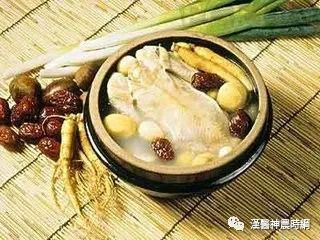
The Song and Yuan Dynasties were a period of comprehensive development for dietary therapy and medicinal cuisine. The official revised “Taiping Shenghui Fang” of the Song Dynasty specifically established a “Dietary Treatment Section”, recording 160 medicinal cuisine formulas that can treat 28 types of diseases, with medicinal cuisine appearing in forms such as porridge, soup, cakes, and tea. The rulers of the Yuan Dynasty also valued medical theory, promoting further integration of Mongolian and Han medicine and absorbing the achievements of foreign medicine. The “Dietary Treatment Essentials” compiled by the physician Yuhsi Hui is the earliest nutritional science work in China, listing 203 types of food, discussing disease treatment, and emphasizing the importance of dietary and nutritional intake for disease prevention, while detailing dietary hygiene, dietary restrictions, and symptoms of food poisoning, showing considerable insight.
Several rulers of the Northern Song Dynasty placed great importance on the development of medicine, taking positive measures such as establishing the “Medical Book Correction Bureau” for organizing medical texts and the “Taiping Huimin Pharmacy” for pharmacology. In several large-scale formula books officially compiled during the Northern Song Dynasty, dietary therapy was given sufficient attention as an independent specialty. For example, both “Taiping Shenghui Fang” and “Shengji Zonglu” specifically established a “Dietary Treatment Section”, recording 160 formulas used to treat approximately 28 diseases, including stroke, bone steaming, three consumption syndromes, cholera, deafness, five lin syndrome, spleen and stomach deficiency, and dysentery.
In terms of medicinal cuisine formulas, porridge is the most common (such as fermented soybean porridge, almond porridge, black bean porridge, carp porridge, coix seed porridge), becoming the mainstream in the dietary treatment section. Additionally, there are soups, cakes, and teas. The “Shengji Zonglu” includes various forms such as wine, cakes, flour, drinks, and powders, with detailed preparation methods.
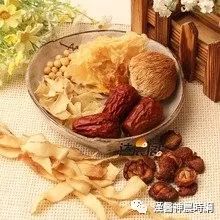
The Ming and Qing Dynasties marked a more refined stage in the study of TCM dietary therapy and medicinal cuisine, where almost all works on materia medica paid attention to the relationship between materia medica and dietary therapy, achieving a high level of cooking and preparation for medicinal cuisine, most of which met nutritional requirements. The Ming Dynasty’s monumental medical work “Bencao Gangmu” provided rich materials for TCM dietary therapy, with over 300 types listed in the sections on grains, vegetables, and fruits, including dietary restrictions and prohibitions regarding the use of medicine and food.
Emperor Zhu Di’s “Jiu Huang Bencao” recorded 414 plants that could be used for food during famine years, detailing their origins, names, properties, and cooking methods. Additionally, works such as Xu Chunfu’s “Ancient and Modern Medical System”, Lu He’s “Food Materia Medica”, and Ning Yuan’s “Food Appreciation Materia Medica” are notable, with works like Jia Ming’s “Dietary Must-Knows” and Wang Mengying’s “Dietary Recipes of Suixi” still holding significant practical value in clinical and daily life today.
A prominent feature of dietary therapy during this period was the further development of vegetarianism, as seen in Huang Yunhu’s “Porridge Recipes” and Cao Tingdong’s “Old Sayings”, both emphasizing vegetarianism, which contributed to the development of dietary therapy and health studies. The history of Chinese medicinal cuisine stretches from ancient times to the present, with a rich legacy; from the imperial court to the common people, it has been widely disseminated. Some scholars estimate that from the early Han to the end of the Ming Dynasty, there were over 300 works related to medicinal cuisine. Today, works on dietary therapy and medicinal cuisine are diverse and widely applied, leading to the emergence of specialized medicinal cuisine restaurants.
In people’s lives, medicinal cuisine has gained unprecedented popularity and is also well-regarded abroad. Medicinal cuisine is an important aspect of traditional Chinese diet and traditional medicine, and today, it has become a unique science, art, and culture that has entered thousands of households and spread worldwide.
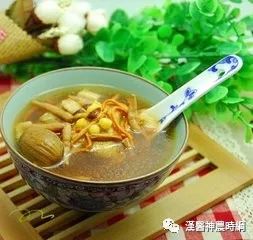
There have also been new developments in the preparation of dietary therapy and medicinal cuisine, such as Xu Chunfu’s “Ancient and Modern Medical System”, which includes various dietary preparations like tea, wine, vinegar, soy sauce, sauces, vegetables, meat, fresh fruits, dairy products, and candied fruits, many of which meet nutritional requirements. During the Ming and Qing Dynasties, there was particular emphasis on dietary therapy for various diseases and the elderly. Notably, Gao Lian’s “Zunsheng Bajian” provides detailed records of suitable diets for the elderly, including 38 types of porridge and 32 types of soup.
In the Qing Dynasty, Cao Cishan’s “Old Sayings for the Elderly” particularly focused on the application of medicinal cuisine for disease prevention and health maintenance in the elderly, discussing the benefits of porridge for the elderly in detail, stating that “porridge can benefit people, especially the elderly,” and categorizing medicinal porridge into three grades: the top grade being “light, fragrant, and palatable,” the middle grade being “slightly inferior,” and the lower grade being “heavy and turbid,” advocating that “the elderly can eat porridge all day without juice, and if hungry, they can eat, which can strengthen the body and prolong life.” The book lists 36 types of top-grade porridge, such as lotus seed porridge, gorgon fruit porridge, almond porridge, walnut porridge, and goji leaf porridge; 27 types of middle-grade porridge, such as poria porridge, red bean porridge, and jujube porridge; and 37 types of lower-grade porridge, such as rehmannia porridge and lamb liver porridge, which are commonly used for nourishing the elderly, strengthening the spleen and kidneys, and for general weakness.
Application Principles
Summary
Medicinal cuisine has multiple functions, including health maintenance, disease treatment, and prevention, and certain principles should be followed in its application. Medicines are used to eliminate diseases quickly, focusing on treatment; medicinal cuisine is primarily used for health maintenance and disease prevention, with slower effects, focusing on nourishment and prevention. Medicinal cuisine holds an important position in health care, maintenance, and rehabilitation, but it cannot replace medicinal therapy. Each has its strengths and weaknesses, and appropriate methods should be selected based on specific individuals and conditions, avoiding misuse.
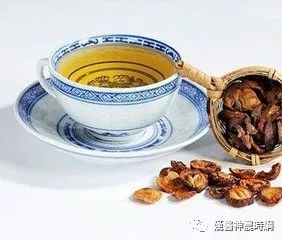
Dietary Choices Based on Patterns
TCM emphasizes pattern differentiation in treatment, and the application of medicinal cuisine should also be based on pattern differentiation in selecting ingredients and combinations. For example, patients with blood deficiency often choose blood-nourishing foods like jujubes and peanuts, while patients with Yin deficiency often use goji berries, lilies, and Mai Dong. Only by using ingredients according to the patterns can the health benefits of medicinal cuisine be realized.
Seasonal Variations
TCM believes that humans correspond with the sun and moon, and the operation of the body’s organs and blood is closely related to the changes in the natural climate. “Use cold to avoid cold, use heat to avoid heat” means that when using cold-natured medicines, one should avoid cold winter, and when using warm-natured medicines, one should avoid hot summer. This perspective also applies to medicinal cuisine.
Individual Considerations
Due to differences in individual constitution and age, dietary choices should also vary. Children have delicate constitutions, so ingredients should not be too cold or too hot; the elderly often have liver and kidney deficiencies, so warming and drying medicines should be avoided; pregnant women should avoid blood-activating and stasis-removing ingredients to prevent fetal movement. These are all considerations to keep in mind when preparing medicinal cuisine.
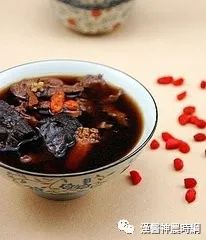
Regional Variations
Different regions have varying climatic conditions and lifestyles, leading to differences in physiological activities and pathological changes. Some areas are humid, with diets rich in warming, drying, and spicy foods, while others are cold, with diets rich in warming and greasy foods. In contrast, southern Guangdong cuisine tends to be cooler and milder. The same principle applies when selecting ingredients for medicinal cuisine.
The compatibility and taboos of medicines and foods are based on ancient experiences, which are often followed by later generations. Some of these may not have scientific proof, but until reliable conclusions are reached, traditional sayings should be cautiously referenced. The main taboos include: pork against wumei, platycodon, coptis, huanglian, lily, and atractylodes; pig’s blood against rehmannia, he shou wu, and honey; lamb against pinellia and acorus, avoiding copper and cinnabar; dog meat against shanglu, avoiding almonds; crucian carp against magnolia bark, avoiding mai dong; garlic against rehmannia and he shou wu; radish against rehmannia and he shou wu; vinegar against poria.
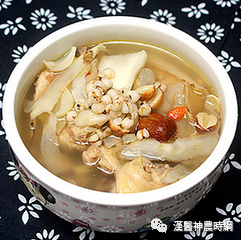
There are also some taboos regarding the compatibility of foods with each other. Although the reasoning may not be fully substantiated, it is still advisable to exercise caution in the application of medicinal cuisine and treat these taboos as important references. These taboos include: pork against buckwheat, soy sauce, crucian carp, and yellow soybeans; lamb against vinegar; dog meat against garlic; crucian carp against mustard greens and pig liver; pig’s blood against yellow soybeans; pig liver against buckwheat, soy sauce, crucian carp, and fish; crucian carp against dog meat; turtle meat against amaranth, wine, and fruits; eel against dog meat and dog blood; sparrow meat against pig liver; duck eggs against mulberries and plums; chicken against mustard, glutinous rice, and plums; turtle meat against pork, rabbit meat, duck meat, amaranth, and eggs.

The compatibility taboos of medicinal ingredients follow the theories of materia medica, generally referencing the “Eighteen Contradictions” and “Nineteen Avoidances”. The specific contents of the “Eighteen Contradictions” include: licorice against gan sui, euphorbia, seaweed, and peony; aconite against fritillaria, gourd, pinellia, white lily, and white peony; and rhubarb against ginseng, adenophora, salvia, and asarum. The specific contents of the “Nineteen Avoidances” include: sulfur against natron, mercury against arsenic, wolf poison against myrrh, croton against morning glory, clove against turmeric, and chuanwu and caowu against rhinoceros horn, with various other specific taboos.
